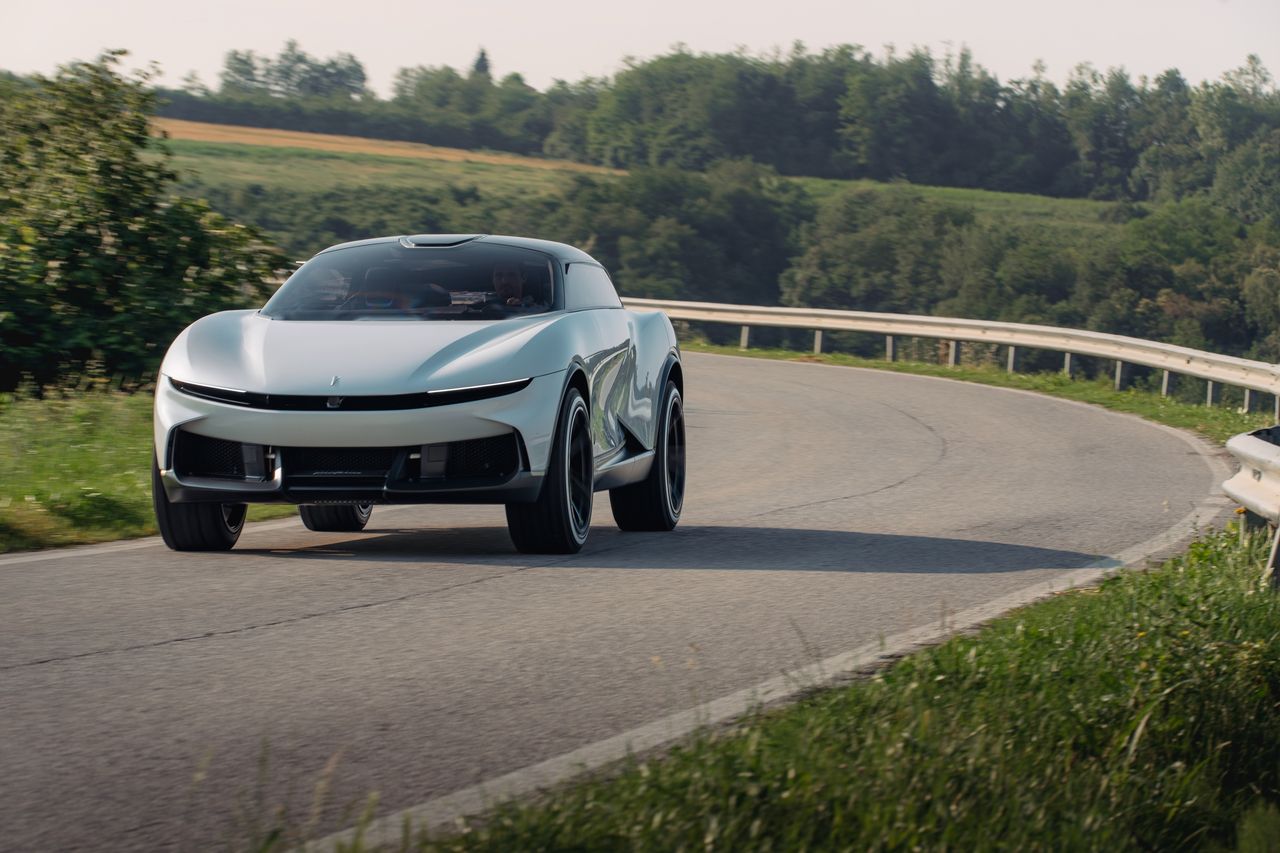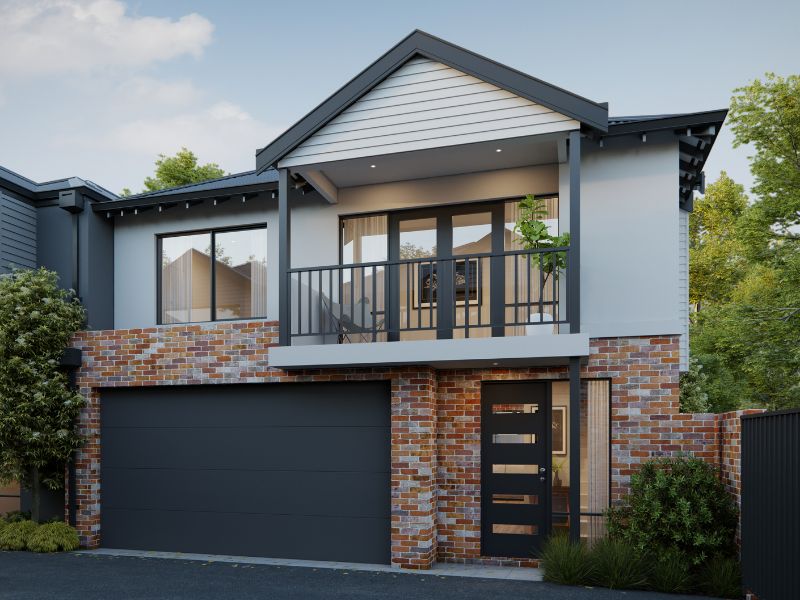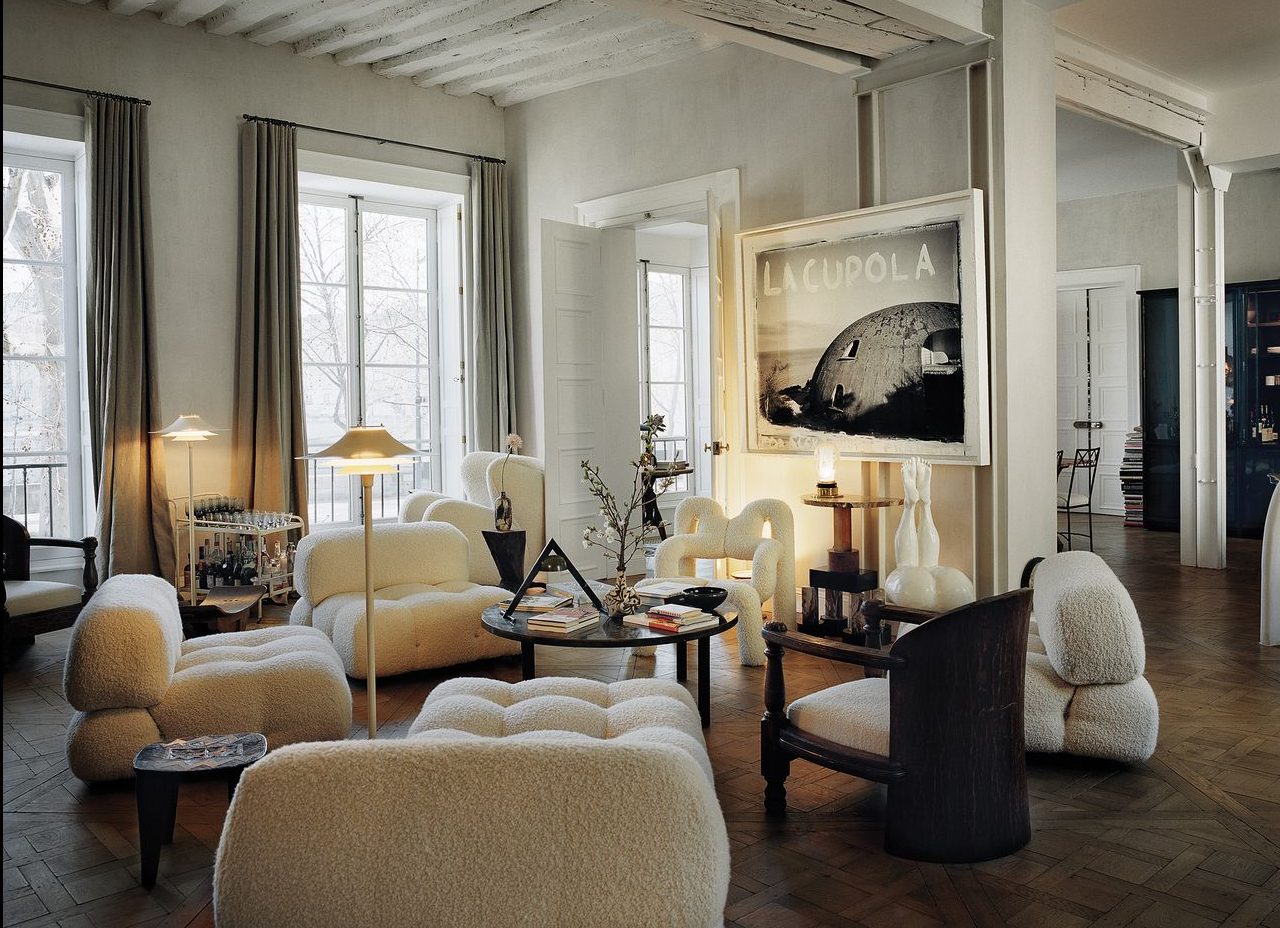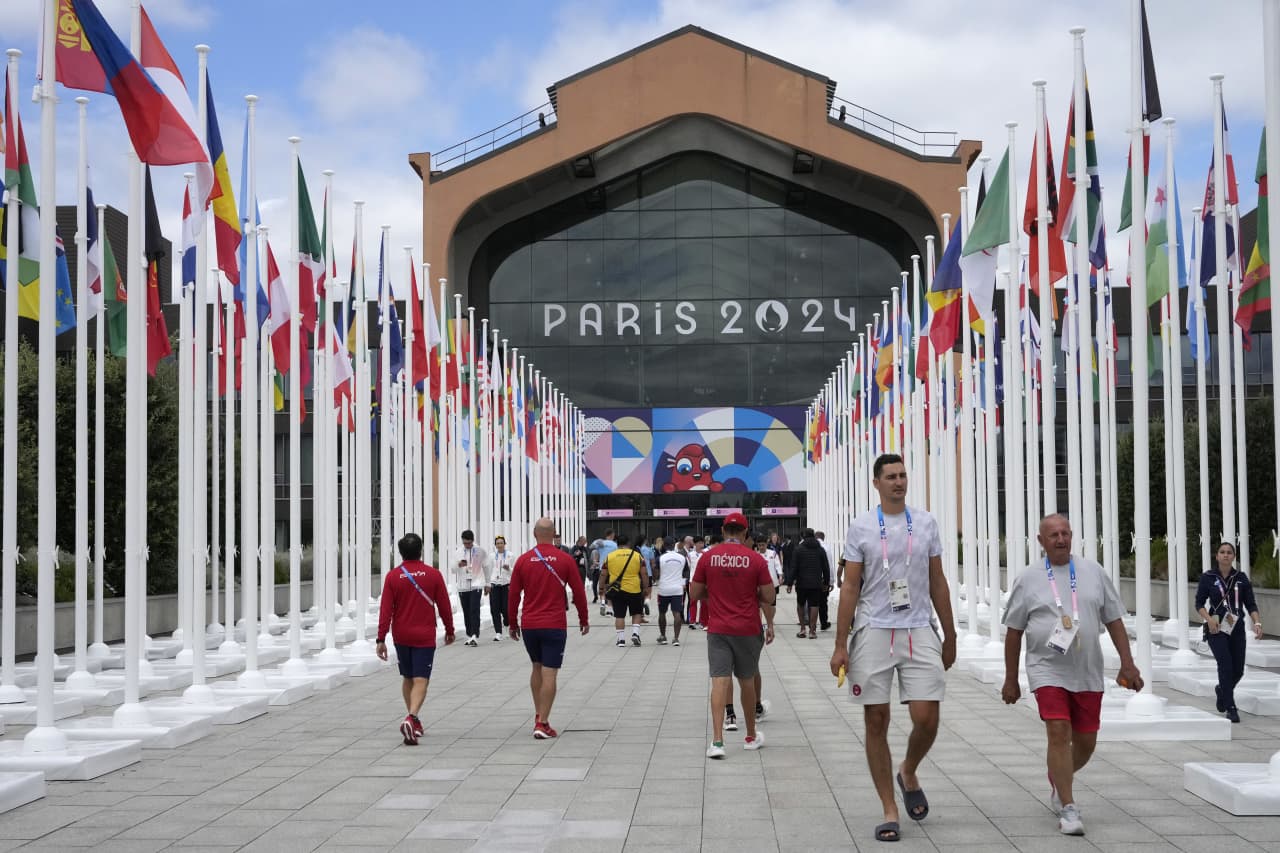There are many advantages to unveiling high-end cars this week at Pebble Beach this week, where the average attendee will find the vehicles well within their means. And so it is with the venerable Italian coachbuilder-turned-automaker Pininfarina, founded by Battista “Pinin” Farina in 1930.
The PURA Vision design concept to be shown at Pebble was developed in-house at Pininfarina. Most onlookers would call it an SUV, or at least SUV-adjacent, but Pininfarina calls it a Luxury Utility Vehicle (e-LUV). The first design element to capture the eye is the glass dome that sees the door glass and windshield flowing uninterrupted into the roof. The side glass opens up in gullwing fashion but the doors stay put and open in “suicide” fashion, with the rear doors rear hinged to allow easy access to the back seat.
The PURA Vision looks like no other car, or at least no recent one. It sits high on huge 23-inch wheels, with slab sides and a low and aerodynamic “pillbox” upper body that recalls some chopped 1950s customs. And a 1950s design was an inspiration, the Lancia Florida I and II concepts of 1955 and 1957 respectively. The Florida I sedan also had suicide doors and no vertical roof support structure between the doors, known as a “B” pillar. Another inspiration, the gorgeous Pininfarina-designed 1953 Alfa Romeo 6C 3000 Superflow concept, had a similar glass dome roof and a futuristic look. There are very slim horizontal LED lights at the back that extend into the curved rear hatch. The interior is relatively simple, with controls on a console-mounted tablet.

Dan Connell, the chief brand officer for Pininfarina, describes the car as “beautiful, but in an unexpected form.”
Currently, Pininfarina offers the Batista, a US$2.2 million electric supercar based on the ultra-fast Rimac Nevera, and in the process of developing the PURA Vision, the company “kept the Battista owners and other admirers of the brand close,” Connell says. “We had a private showing for them, and some were skeptical—but their minds were blown by what they saw.”
The company’s second production vehicle, code-named B95, is the first Pininfarina to reflect the PURA Vision design philosophy, Connell says. Details will be revealed during B95’s formal debut at the Quail: A Motorsports on Saturday. It’s sure to be a very exclusive car with a big price tag.
Pininfarina will also have the Battista Edizione Nino Farina on its stand at Pebble. First shown at the Goodwood Festival of Speed in England last July, it’s a special edition of the Battista presented as a tribute to the first Formula One World Champion, Nino Farina, who was Battista Farina’s nephew. Setting it apart are unique paint colors, special gold wheels, and body side graphics. An aluminium door plate celebrates the younger Farina’s racing wins. Only five of the high-end electric cars will be built. It’s the second limited-edition Battista, after the Anniversario model.
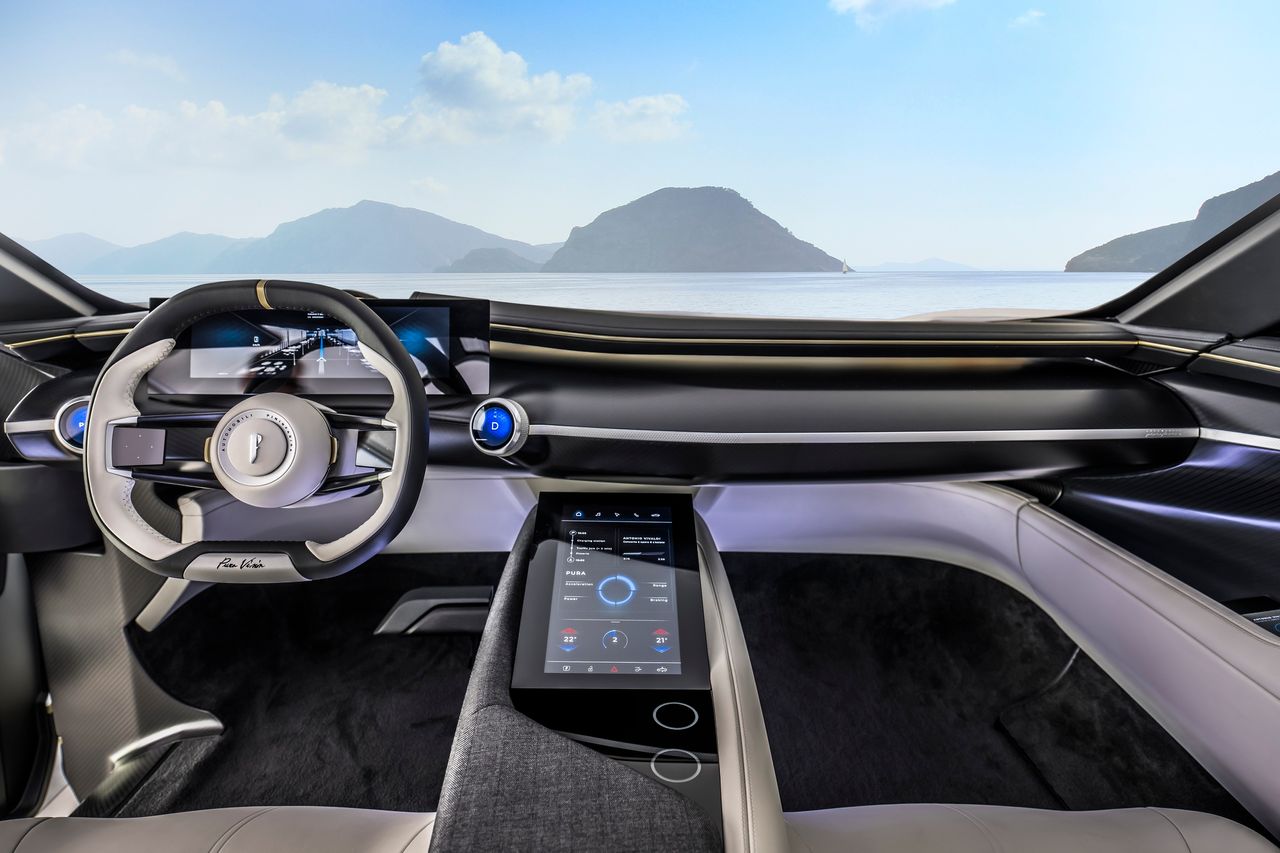
Pebble Beach is always a parade of new model reveals. The “House of Maserati” is celebrating the 75th anniversary of the GranTurismo (GT) model. Both the electric Folgore GT and the Trofeo versions, powered by a three-litre twin-turbo Nettuno V6, are to be sold in the U.S. Two one-of-a-kind GTs, the Luce and Prisma, will be on display at the Quail. Also seen will be the MC20-based Maserati MCXtrema, with 730 horsepower and a build of just 62 cars. Lotus will be giving rides in the 2024 Emira sports car, the final gas-powered Lotus with both four-cylinder and V6 power. Prices start at US$77,100. Rolls-Royce will show a one-of-a-kind car created for a customer.
Other cars to be shown at Pebble include: the Acura ZDX electric crossover, a “world-first new model” from Aston Martin, the Bugatti Chiron Super Sport Golden Era, the Hennessey Venom Revolution Roadster (with a 17-pound removable carbon fiber hardtop), the world premiere of the new Mercedes-AMG GT, the second Lamborghini electric concept, and the Infiniti QX Monograph Concept.
 Copyright 2020, Dow Jones & Company, Inc. All Rights Reserved Worldwide. LEARN MORE
Copyright 2020, Dow Jones & Company, Inc. All Rights Reserved Worldwide. LEARN MORE
What a quarter-million dollars gets you in the western capital.
Alexandre de Betak and his wife are focusing on their most personal project yet.
As Paris makes its final preparations for the Olympic games, its residents are busy with their own—packing their suitcases, confirming their reservations, and getting out of town.
Worried about the hordes of crowds and overall chaos the Olympics could bring, Parisians are fleeing the city in droves and inundating resort cities around the country. Hotels and holiday rentals in some of France’s most popular vacation destinations—from the French Riviera in the south to the beaches of Normandy in the north—say they are expecting massive crowds this year in advance of the Olympics. The games will run from July 26-Aug. 1.
“It’s already a major holiday season for us, and beyond that, we have the Olympics,” says Stéphane Personeni, general manager of the Lily of the Valley hotel in Saint Tropez. “People began booking early this year.”
Personeni’s hotel typically has no issues filling its rooms each summer—by May of each year, the luxury hotel typically finds itself completely booked out for the months of July and August. But this year, the 53-room hotel began filling up for summer reservations in February.
“We told our regular guests that everything—hotels, apartments, villas—are going to be hard to find this summer,” Personeni says. His neighbours around Saint Tropez say they’re similarly booked up.
As of March, the online marketplace Gens de Confiance (“Trusted People”), saw a 50% increase in reservations from Parisians seeking vacation rentals outside the capital during the Olympics.
Already, August is a popular vacation time for the French. With a minimum of five weeks of vacation mandated by law, many decide to take the entire month off, renting out villas in beachside destinations for longer periods.
But beyond the typical August travel, the Olympics are having a real impact, says Bertille Marchal, a spokesperson for Gens de Confiance.
“We’ve seen nearly three times more reservations for the dates of the Olympics than the following two weeks,” Marchal says. “The increase is definitely linked to the Olympic Games.”

Getty Images
According to the site, the most sought-out vacation destinations are Morbihan and Loire-Atlantique, a seaside region in the northwest; le Var, a coastal area within the southeast of France along the Côte d’Azur; and the island of Corsica in the Mediterranean.
Meanwhile, the Olympics haven’t necessarily been a boon to foreign tourism in the country. Many tourists who might have otherwise come to France are avoiding it this year in favour of other European capitals. In Paris, demand for stays at high-end hotels has collapsed, with bookings down 50% in July compared to last year, according to UMIH Prestige, which represents hotels charging at least €800 ($865) a night for rooms.
Earlier this year, high-end restaurants and concierges said the Olympics might even be an opportunity to score a hard-get-seat at the city’s fine dining.
In the Occitanie region in southwest France, the overall number of reservations this summer hasn’t changed much from last year, says Vincent Gare, president of the regional tourism committee there.
“But looking further at the numbers, we do see an increase in the clientele coming from the Paris region,” Gare told Le Figaro, noting that the increase in reservations has fallen directly on the dates of the Olympic games.
Michel Barré, a retiree living in Paris’s Le Marais neighbourhood, is one of those opting for the beach rather than the opening ceremony. In January, he booked a stay in Normandy for two weeks.
“Even though it’s a major European capital, Paris is still a small city—it’s a massive effort to host all of these events,” Barré says. “The Olympics are going to be a mess.”
More than anything, he just wants some calm after an event-filled summer in Paris, which just before the Olympics experienced the drama of a snap election called by Macron.
“It’s been a hectic summer here,” he says.

AFP via Getty Images
Parisians—Barré included—feel that the city, by over-catering to its tourists, is driving out many residents.
Parts of the Seine—usually one of the most popular summertime hangout spots —have been closed off for weeks as the city installs bleachers and Olympics signage. In certain neighbourhoods, residents will need to scan a QR code with police to access their own apartments. And from the Olympics to Sept. 8, Paris is nearly doubling the price of transit tickets from €2.15 to €4 per ride.
The city’s clear willingness to capitalise on its tourists has motivated some residents to do the same. In March, the number of active Airbnb listings in Paris reached an all-time high as hosts rushed to list their apartments. Listings grew 40% from the same time last year, according to the company.
With their regular clients taking off, Parisian restaurants and merchants are complaining that business is down.
“Are there any Parisians left in Paris?” Alaine Fontaine, president of the restaurant industry association, told the radio station Franceinfo on Sunday. “For the last three weeks, there haven’t been any here.”
Still, for all the talk of those leaving, there are plenty who have decided to stick around.
Jay Swanson, an American expat and YouTuber, can’t imagine leaving during the Olympics—he secured his tickets to see ping pong and volleyball last year. He’s also less concerned about the crowds and road closures than others, having just put together a series of videos explaining how to navigate Paris during the games.
“It’s been 100 years since the Games came to Paris; when else will we get a chance to host the world like this?” Swanson says. “So many Parisians are leaving and tourism is down, so not only will it be quiet but the only people left will be here for a party.”





